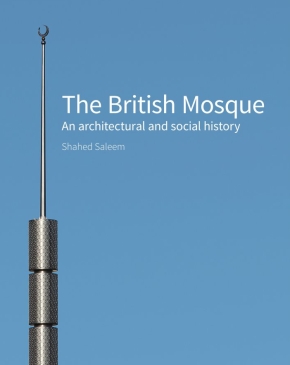The British Mosque: an architectural and social history

|
|
The British Mosque: an architectural and social history. Shahed Saleem, Historic England, 2018, 340 pages, 350 illustrations, hardback. |
This is the story of some 1,500 mosques in Britain, their history, evolution, numbers, geographic distribution, architectural typologies, styles, patterns of growth and urban settings. As a result of an English Heritage / Historic England project, the book skilfully tells an intriguing narrative that goes beyond the dry comprehensive survey.
What is a mosque? What happens between the walls of one? Why do some mosques have domes and minarets, while others do not? What is the difference between Sunni and Shi’ah Muslims? How are differences among Muslim sects reflected in the architecture of their mosques?
Saleem’s book answers all these questions and more by contextualising the British mosque. It tells the stories of Muslims’ 130 years search for their identity as Brits. Some were migrants from Muslim countries. Others were British-born white, or people of colour who converted to Islam. Besides housing their religious, cultural and social needs, the mosque expressed Muslims’ identity and announced their presence by adding a new layer to the diversity of the British cityscape.
The appearance of the mosque in British cities was not always a smooth process. Most mosques were not built before going through various adaptations of design proposals and tough negotiations because of objections by non-Muslim local communities, or in response to refusals by local authorities’ architects and planners. The 70 years it took to realise Regent Park Mosque is perhaps an extreme example of such a complicated and lengthy process.
Purpose-built mosques express the different phases and generations of British Muslims’ search for their identity as both British and Muslim. On the other hand, mosques that were adaptations of existing buildings tell a rich story of organic growth of Muslim communities’ confidence and endeavours to establish their place in Britain.
British mosques are a fascinating catalogue of adaptive reuse of houses, churches, synagogues, schools, warehouses, nightclubs, public houses, dance halls, bingo halls, cinemas, casinos, libraries and fire stations, among other buildings. It is also a catalogue of conservation practices. Brick Lane Mosque is an interesting example of interventions in a Grade II listed building that observed conservation ethics: ‘Through its positioning and its contemporary styling, the minaret carefully negotiates the issue of not altering a historic and listed building to such a degree that its original character is compromised, while nevertheless identifying the Islamic use of the building. It functions, therefore, as street sculpture as much as specifically a signifier of the mosque.’
Brick Lane Mosque is a wonderful example of the diversity of religious faiths and immigrant histories in London. It used to be a Huguenot church, a Christian missionary school, a Wesleyan Methodist chapel, and a Jewish school and synagogue, before it became a mosque in 1976. Understandably, a photograph of its minaret is chosen for the book jacket.
This article originally appeared as ‘A search for identity’ in IHBC's Context 157 (Page 62), published in November 2018. It was written by Hossam Mahdy, international freelance consultant on the conservation of Islamic built heritage.
--Institute of Historic Building Conservation
Related articles on Designing Buildings
IHBC NewsBlog
IHBC Context 183 Wellbeing and Heritage published
The issue explores issues at the intersection of heritage and wellbeing.
SAVE celebrates 50 years of campaigning 1975-2025
SAVE Britain’s Heritage has announced events across the country to celebrate bringing new life to remarkable buildings.
IHBC Annual School 2025 - Shrewsbury 12-14 June
Themed Heritage in Context – Value: Plan: Change, join in-person or online.
200th Anniversary Celebration of the Modern Railway Planned
The Stockton & Darlington Railway opened on September 27, 1825.
Competence Framework Launched for Sustainability in the Built Environment
The Construction Industry Council (CIC) and the Edge have jointly published the framework.
Historic England Launches Wellbeing Strategy for Heritage
Whether through visiting, volunteering, learning or creative practice, engaging with heritage can strengthen confidence, resilience, hope and social connections.
National Trust for Canada’s Review of 2024
Great Saves & Worst Losses Highlighted
IHBC's SelfStarter Website Undergoes Refresh
New updates and resources for emerging conservation professionals.
‘Behind the Scenes’ podcast on St. Pauls Cathedral Published
Experience the inside track on one of the world’s best known places of worship and visitor attractions.
National Audit Office (NAO) says Government building maintenance backlog is at least £49 billion
The public spending watchdog will need to consider the best way to manage its assets to bring property condition to a satisfactory level.
















